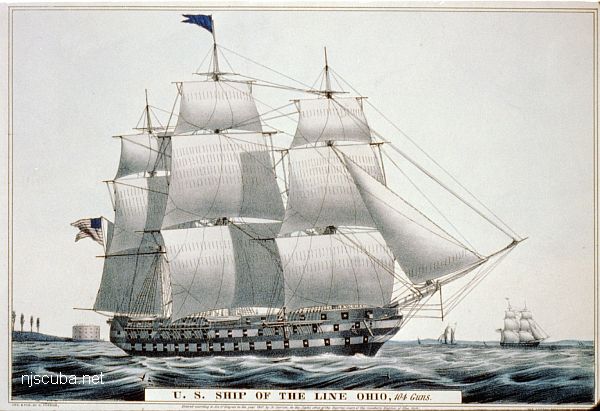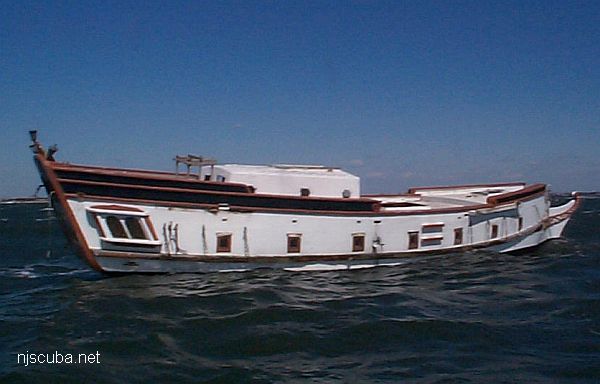USS Ohio

- Type:
- shipwreck, 74 gun ship-of-the-line, U.S. Navy
- Name:
- that place next to Indiana
- Built:
- 1820, New York Naval Shipyard, Brooklyn NY USA
- Specs:
- ( 208 x 54 ft ) 2757 gross tons
- Sunk:
- April 1884
set adrift and grounded by storm while being dismantled, later deliberately burned - Depth:
- 20 ft
The stripped hulk of the Ohio eventually burned and sank. Today nothing is left but scattered timbers and debris.


Questions or Inquiries?
Just want to say Hello? Sign the .